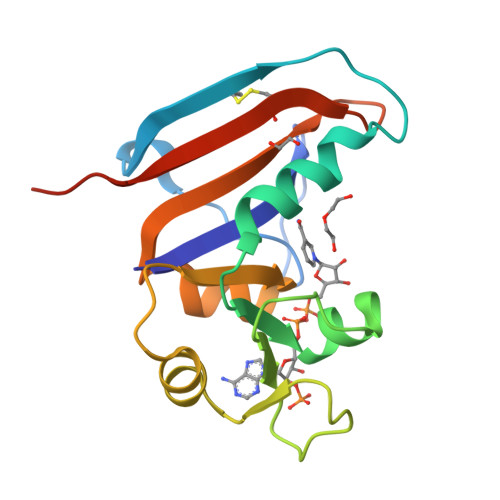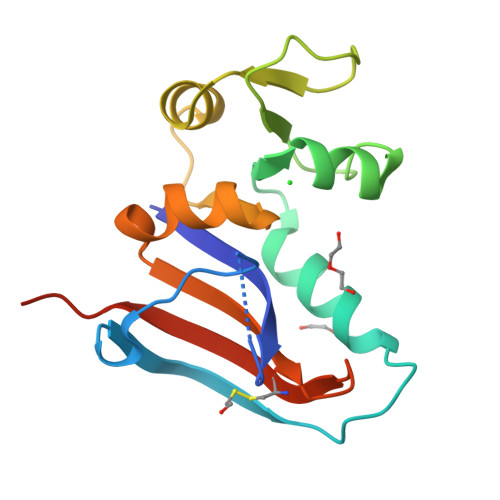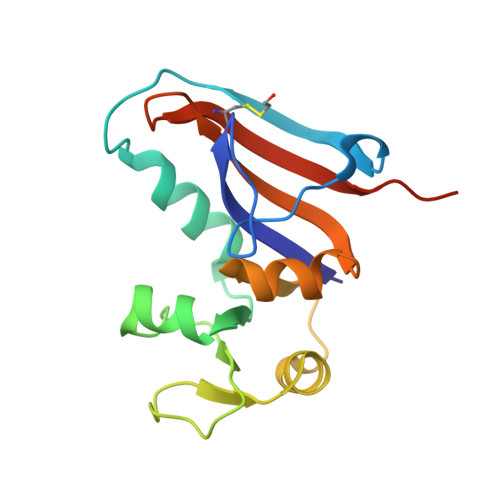Protein rethreading: A novel approach to protein design.
Agah, S., Poulos, S., Yu, A., Kucharska, I., Faham, S.(2016) Sci Rep 6: 26847-26847
- PubMed: 27229326
- DOI: https://doi.org/10.1038/srep26847
- Primary Citation of Related Structures:
5DXV - PubMed Abstract:
Protein engineering is an important tool for the design of proteins with novel and desirable features. Templates from the protein databank (PDB) are often used as initial models that can be modified to introduce new properties. We examine whether it is possible to reconnect a protein in a manner that generates a new topology yet preserves its structural integrity. Here, we describe the rethreading of dihydrofolate reductase (DHFR) from E. coli (wtDHFR). The rethreading process involved the removal of three native loops, and the introduction of three new loops with alternate connections. The structure of the rethreaded DHFR (rDHFR-1) was determined to 1.6 Å, demonstrating the success of the rethreading process. Both wtDHFR and rDHFR-1 exhibited similar affinities towards methotrexate. However, rDHFR-1 showed no reducing activity towards dihydrofolate, and exhibited about ~6-fold lower affinity towards NADPH than wtDHFR. This work demonstrates that protein rethreading can be a powerful tool for the design of a large array of proteins with novel structures and topologies, and that by careful rearrangement of a protein sequence, the sequence to structure relationship can be expanded substantially.
Organizational Affiliation:
Department of Molecular Physiology and Biological Physics, University of Virginia School of Medicine, Charlottesville, Virginia, 22903, United States.
























